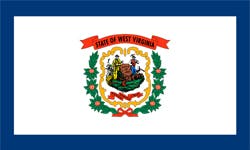The Medicare program was signed into law in 1965, but prescription drug coverage only dates back to 2006. It is the result of the Medicare Modernization Act (MMA), which introduced both Medicare Advantage (Part C) and prescription drug coverage (Part D). This page explains Medicare Part D in West Virginia.
How can you get Medicare Part D in West Virginia?
You have two Medicare Part D options in West Virginia:
- A standalone Medicare Part D prescription drug plan
- A Medicare Advantage Prescription Drug plan (MA-PD).
Original Medicare includes Part A, hospital insurance, and Part B, medical insurance. You also get the same benefits with a Medicare Advantage plan. However, most MA plans also offer additional coverage, such as fitness programs, prescription drug coverage, and routine vision and dental care.
You may add a standalone Part D plan to either Original Medicare or an MA plan that does not cover prescription drugs. (This includes around 10% of MA plans.)
Medicare Advantage Prescription Drug plans combine your Original Medicare and Part D benefits into a single policy that is often referred to as an all-in-one plan.
You may not combine a standalone Part D plan with an MA-PD plan.
Who is eligible for Medicare Part D in West Virginia?
If you have Medicare Part A and/or Part B, you can sign up for Medicare Part D in West Virginia. Most Part D plans also include a requirement that enrollees must live in the plan's service area.
Most people become eligible for Medicare when they turn 65, assuming they are either a U.S. citizen or permanent legal resident. However, enrollment in Parts A and B is not automatic unless you begin receiving Social Security benefits at least 4 months before your 65th birthday. If you still haven't retired, you'll probably have to apply for Medicare through Social Security.
If you collect Social Security disability benefits for 24 months, you qualify for Medicare even if you haven't turned 65 yet. In this case, you enrollment in Parts A and B occurs automatically during your 25th month.
Medicare Part D enrollment is never automatic, even if you receive Social Security benefits.
When can you join in a prescription drug plan in West Virginia?
Medicare restricts Part D enrollment in West Virginia to specific times known as enrollment periods.
- Initial Enrollment Period: Your IEP begins 3 months before the month you become eligible for Medicare and lasts for a full 7 months. So, if your 65th birthday or month 25 of collecting disability benefits occurs in June, your IEP begins on March 1 and ends on September 30. As soon as you sign up for Part A and/or Part B, you may join a prescription drug plan.
- General Enrollment Period: If you missed your Initial Enrollment Period and do not qualify for a Special Enrollment Period (SEP), you can sign up for Medicare Part A and/or Part B during General Enrollment, which runs from January 1 to March 31. After that, the window to join a prescription drug plan opens on April 1 and closes June 30.
- Medicare Annual Enrollment Period: AEP runs from October 15 through December 7. This is when current Medicare beneficiaries can make any necessary changes to their Medicare coverage, including joining an MA-PD or Part D plan.
- Medicare Advantage Open Enrollment Period: Between January 1 and March 31, Medicare Advantage beneficiaries may either switch to a new MA plan or return to Original Medicare. If making that change leads to you losing your prescription drug coverage, you may also join for a standalone Part D plan during Open Enrollment.
- Special Enrollment Periods: Special circumstances, like moving or losing your current coverage, may qualify you for a Special Enrollment Period. Find the full list of qualifying special circumstances on Medicare.gov.
Comparing Medicare Part D plans in West Virginia
Because private insurance companies provide Medicare prescription drug plans in West Virginia, coverage and costs can vary widely. Compare your Part D options carefully to ensure you get the best prescription drug plan for your unique needs.
The first step is reviewing the plan's drug formulary. This is the list of medications the plan covers and if it doesn't include one or more of your prescriptions, you probably want a different plan.
After you find a Part D prescription drug plan that covers your medications, you can look at costs. Your out-of-pocket costs under Medicare Part D may include:
- Annual deductible
- Monthly premiums
- Copays or coinsurance
The plan's drug tiers help you estimate your copayments. Medications on a lower tier cost less than ones found on upper tiers. So, whichever tiers your prescriptions are on gives you a good idea of what your copayment or coinsurance would be for that medication.
Medicare beneficiaries who have limited income and resources may qualify for Extra Help. Medicare or Social Security usually notifies you via mail if you qualify. However, if you believe you meet the requirements for Extra Help but did not receive notification, call your plan provider.
Please remember: All communications from both Medicare and Social Security are via U.S. mail. If you receive a call from someone claiming they work for either Medicare or Social Security, hang up the phone and then call the appropriate program (1-800-MEDICARE or 1-800-772-1213). Explain what happened and follow their instructions.
Do you have to have Medicare Part D in West Virginia?
No part of Medicare is mandatory in West Virginia, including Part D. However, if you go 63 days or more without creditable prescription drug coverage, you may have to pay the Medicare Part D late enrollment penalty for the entire time you have Part D (whether it's a standalone or MA-PD plan). To be consideredcreditable, the plan must offer comparable benefits to what you'd get with Medicare Part D and at a similar price.
